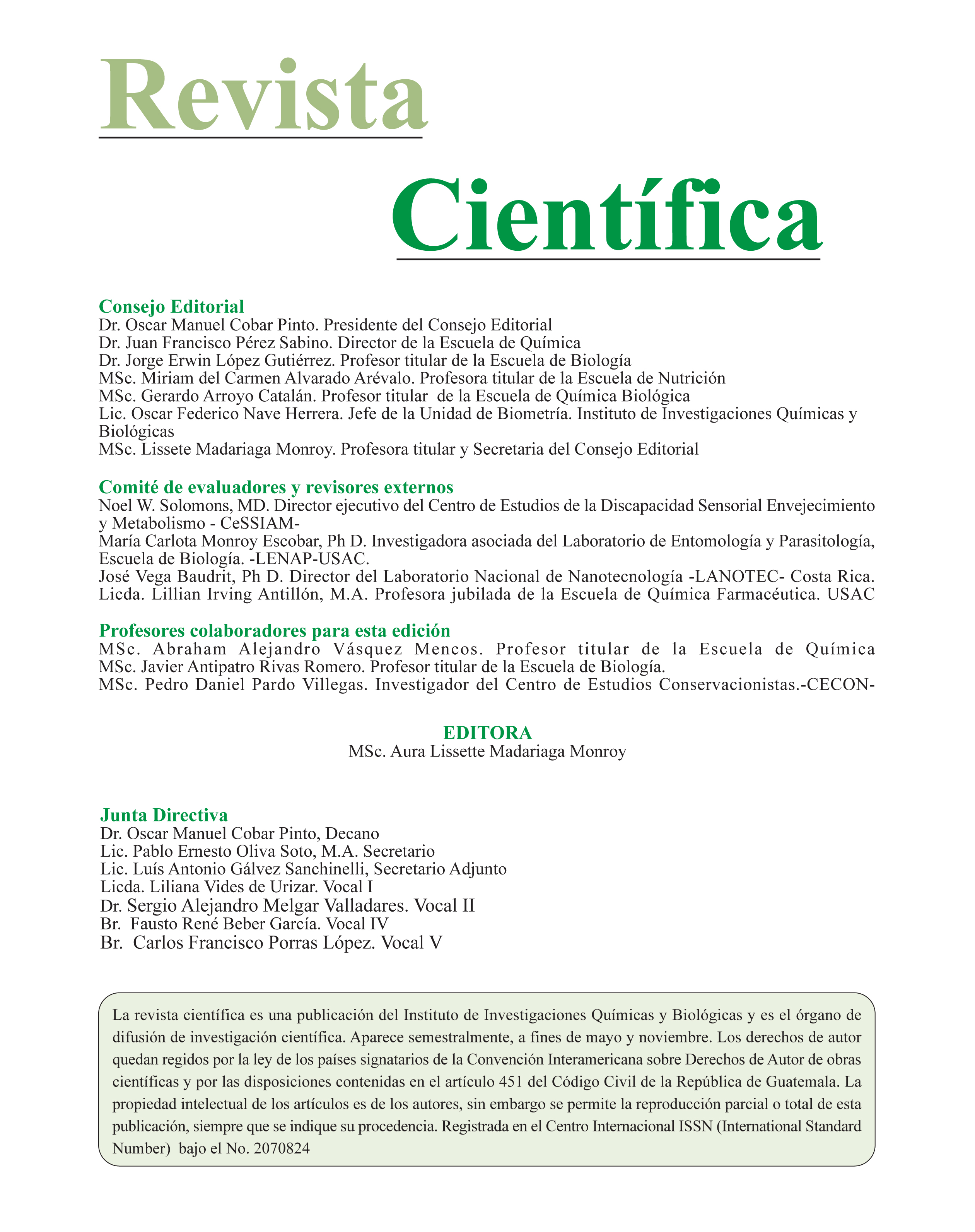Medicinal and edible plants of the Monterrico nature reserve RNUMM, Taxisco, Santa Rosa
DOI:
https://doi.org/10.54495/Rev.Cientifica.v22i1.123Keywords:
Ethnoflora, ethnobotanic, medicinal plants, edible plants, Monterrico Natural Reserve, RNUMMAbstract
An ethnobotanical research was conducted in 2011, in five communities located in the “Monterrico” Nature Reserve - RNUMM: El Pumpo, Monterrico, La Curvina, La Avellana and Agua Dulce. The purpose of the research was to establish the medicinal and edible plants, and the traditional knowledge related to those plants in the nature reserve. We carried out 101 interviews to key informants belonging to the five communities. The research was complemented with visits and specimens collection in gardens, and natural areas. All the specimens were deposited in USCG Herbarium of the Center for Conservationist Studies (CECON), where the taxonomic description was performed. A total of 181 species were recorded, 40 species are edible plants, 91 species are medicinal, and 50 species have both medicinal and edible use; 60% of the reported plants are native, and the majority of these were found growing wild in gardens or in the last natural areas. These findings demonstrate the importance of the protection of these natural areas, and to assess and promote home gardens within the reserve. The natural areas and the home gardens serve as reservoirs of medicine and food for people of the area also are part of the identity and heritage to the new generations, in the form of traditional knowledge, as a result of their long term interaction with nature.
Downloads
References
Aguilar, J.I. (1966). Relación de unos aspectos de la Flora útil de Guatemala. Guatemala: Ministerio de Agricultura.
Centro de Estudios Conservacionistas (CECON); Consejo Nacional de Áreas Protegidas (CONAP); Proyecto: Aprovechamiento Sostenible de los Recursos Asociados a los
Manglares del Pacífico de Guatemala (INAB-UICN-UE). (1999). Plan Maestro de la Reserva Natural de Usos Múltiples Monterrico- RNUMM. Guatemala: Sigüenza de
Micheo, RR; Ruíz –Ordóñez, JA (Comps). Cáceres, A; Girón, L. (1977). Sistemas para la revalidación, investigación y comercialización de las plantas medicinales en Guatemala. Guatemala: Universidad de San Carlos de Guatemala, Centro de Estudios Folklóricos.
Cáceres, A. (1997). Plantas de uso medicinal en Guatemala. Guatemala: Editorial Universitaria.
Orellana, R. (1998). “Plantas Medicinales y Comestibles en siete comunidades de la Reserva de Biosfera Sierra de Las Minas, con énfasis en Plantas Medicinales”. Guatemala: Tesis Ad Gradum. Escuela de Biología, Facultad de C.C.Q.Q. y Farmacia-USAC.
Pascual, V. L. (1981). Colecta y descripción de los recursos fitogenéticos de uso Medicinal en el municipio de San Pedro Ayampuc del Depto. De Guatemala. Guatemala: Tesis Ing. Agr. Universidad de San Carlos de Guatemala. Facultad de Agronomía.
Pöll, E. (1984). Plantas comestibles y tóxicas de Guatemala. Revista Científica. no. 8:13-18.
Standley, Paul; Williams, Louis; Nash, Dorothy. (1946- 1973). Flora of Guatemala. Fieldiana: Botany. Vol. (24) Part IX, No. 1-4. Field Museum of Natural History. USA.
Downloads
Published
How to Cite
Issue
Section
License
Copyright (c) 2012 P. Pardo, C. Burgos

This work is licensed under a Creative Commons Attribution 4.0 International License.
Authors who publish with this journal agree to the following terms:
- Authors retain copyright and grant the journal right of first publication with the work simultaneously licensed under a Creative Commons Attribution License 4.0 that allows others to share the work with an acknowledgement of the work's authorship and initial publication in this journal.
- Authors are able to enter into separate, additional contractual arrangements for the non-exclusive distribution of the journal's published version of the work (e.g., post it to an institutional repository or publish it in a book), with an acknowledgement of its initial publication in this journal.
- Authors are permitted and encouraged to post their work online (e.g., in institutional repositories or on their website) prior to and during the submission process, as it can lead to productive exchanges, as well as earlier and greater citation of published work.









